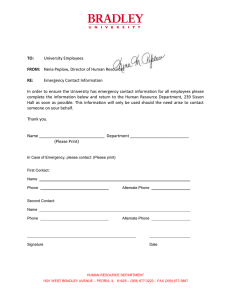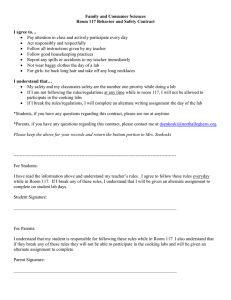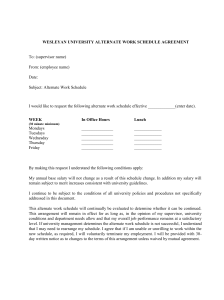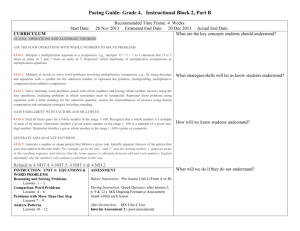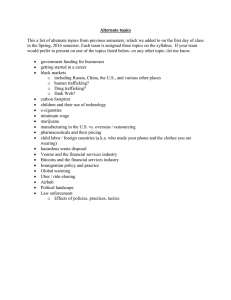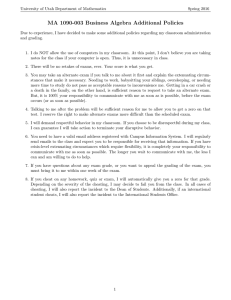x -2
advertisement
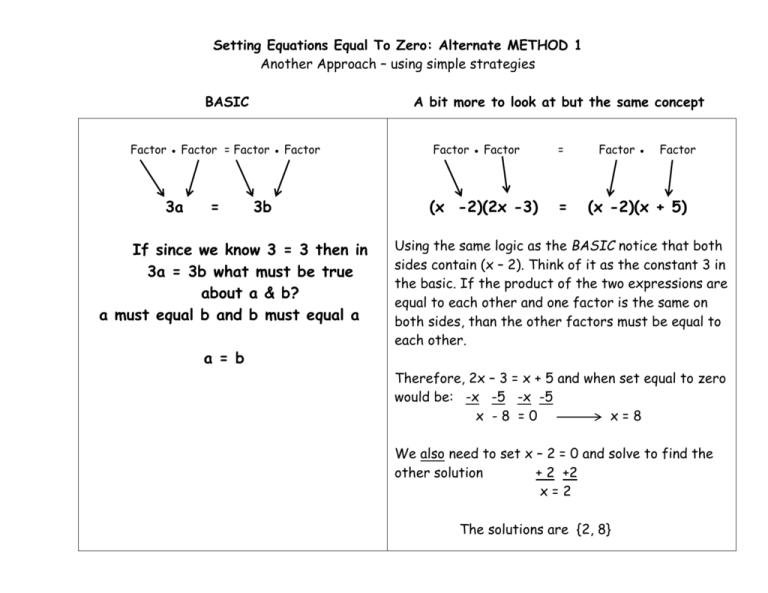
Setting Equations Equal To Zero: Alternate METHOD 1
Another Approach – using simple strategies
BASIC
A bit more to look at but the same concept
Factor ● Factor = Factor ● Factor
3a
=
3b
If since we know 3 = 3 then in
3a = 3b what must be true
about a & b?
a must equal b and b must equal a
a = b
Factor ● Factor
(x -2)(2x -3)
=
=
Factor ●
Factor
(x -2)(x + 5)
Using the same logic as the BASIC notice that both
sides contain (x – 2). Think of it as the constant 3 in
the basic. If the product of the two expressions are
equal to each other and one factor is the same on
both sides, than the other factors must be equal to
each other.
Therefore, 2x – 3 = x + 5 and when set equal to zero
would be: -x -5 -x -5
x -8 =0
x=8
We also need to set x – 2 = 0 and solve to find the
other solution
+ 2 +2
x=2
The solutions are {2, 8}
Setting Equations Equal To Zero: Alternate METHOD 2
And yet …Another Approach – using simple strategies
BASIC
A bit more to look at but the same concept
Factor ● Factor = Factor ● Factor
3a
=
3b
3 is a common factor on both sides
and we know we can divide both side
by 3 and when we do we get:
3a
3
=
a = b
3b
3
Factor ● Factor
(x -2)(2x -3)
=
=
Factor ●
Factor
(x -2)(x + 5)
Using the same logic as the BASIC notice that both
sides contain (x – 2). If you divide both sides by
(x – 2) you would be left with 2x -3 = x + 5
Therefore, 2x – 3 = x + 5 and when set equal to zero
would be: -x -5 -x -5
x -8 =0
x=8
We also need to set x – 2 = 0 and solve to find the
other solution
+ 2 +2
x=2
The solutions are {2, 8}
**BEWARE: It is important to remember with either of these Alternate METHODS that one of
the solutions is eliminated by the process and must still be solved and stated as a solution.


